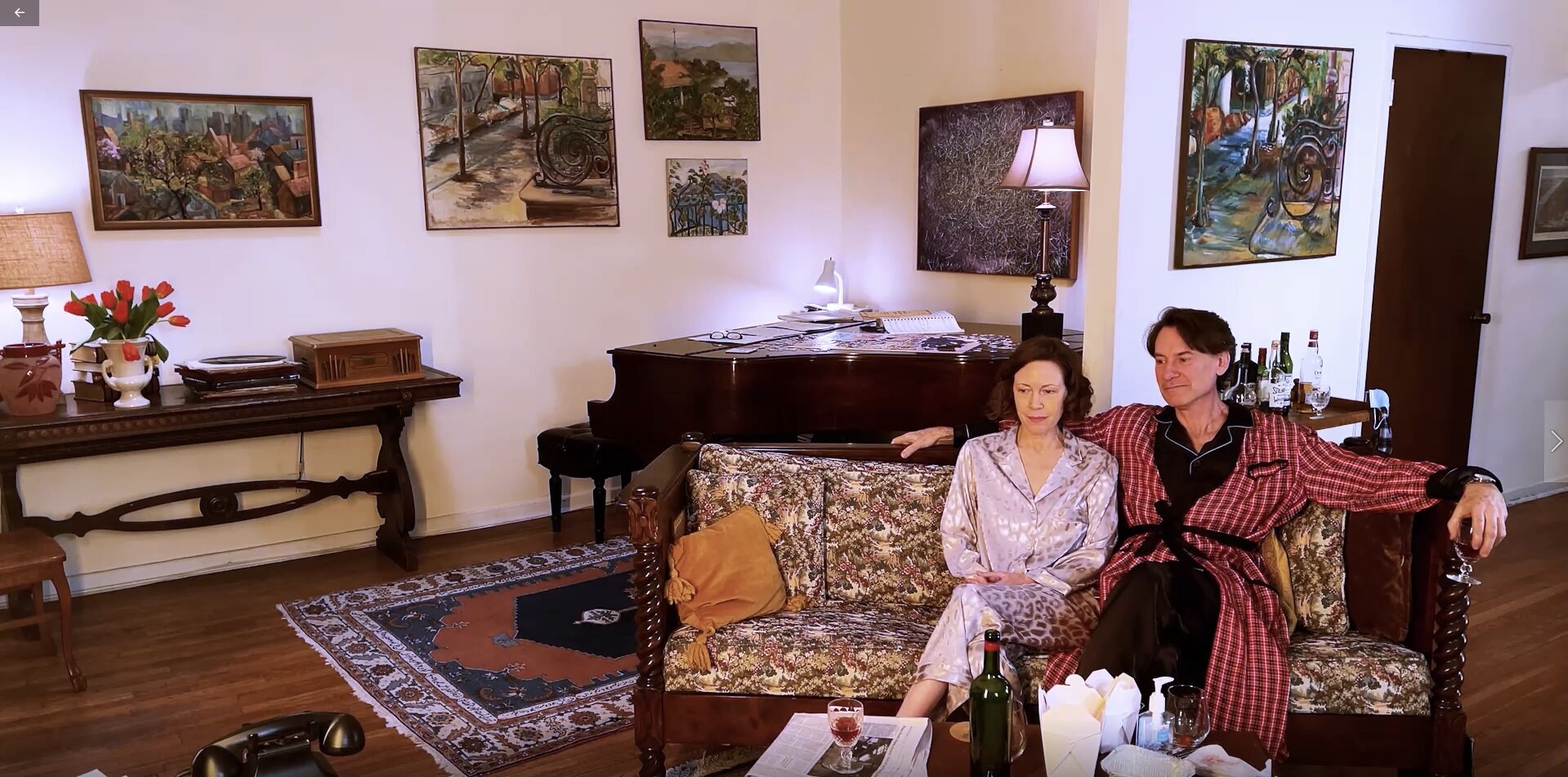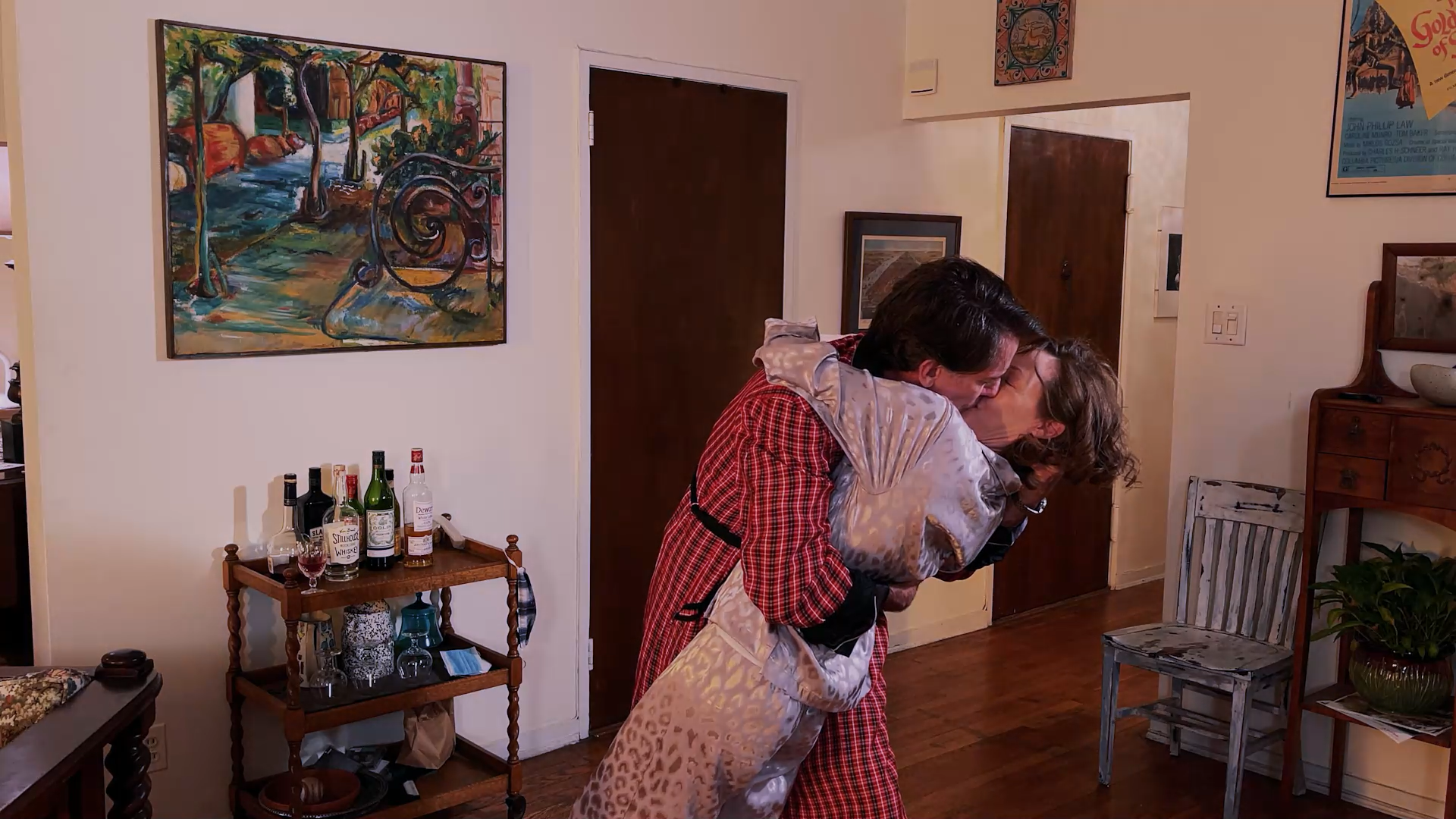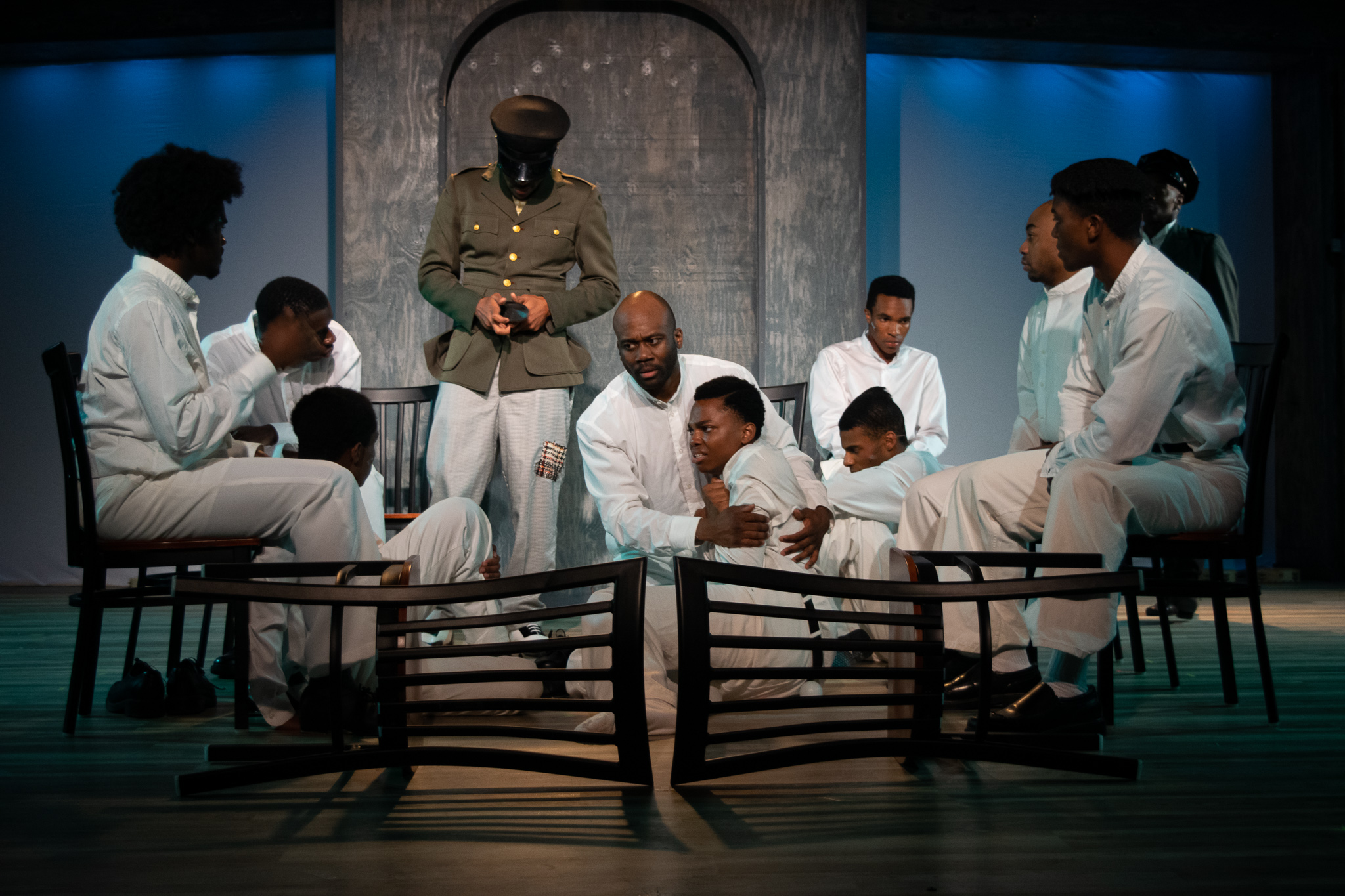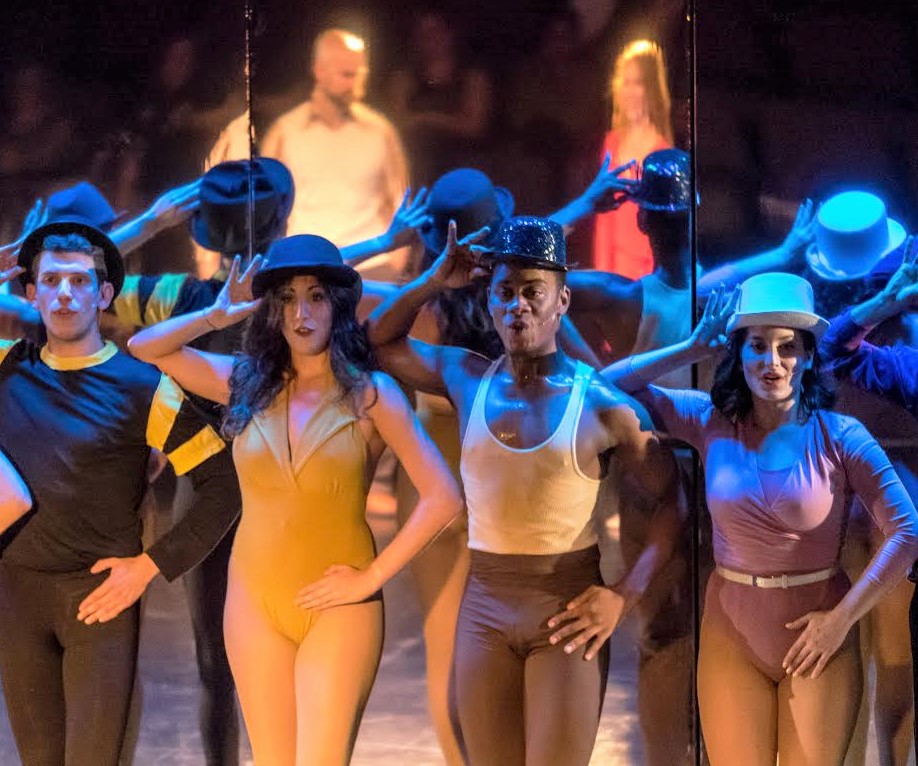We’re approaching the first anniversary of the pandemic lockdown that prematurely ended the theater season of 2019-20 and spawned a variety of coping mechanisms in the form of online theater approximations into 2021. The “watch-when-you-will by following a link” style of online event is the more prevalent and Playhouse on Park in West Hartford is currently offering a zoom playlet in that format. Elyot and Amanda: All Alone could be called a pandemic adaptation of Private Lives, Noël Coward’s popular comedy of mannered, sparring couples, from 1930 (last seen locally at Hartford Stage, directed by Darko Tresnjak, in 2015). Directed by Sean Harris, what Ezra Barnes and Veanne Cox, as Elyot and Amanda, respectively, have devised is a glimpse of a couple walking their wits as they have nothing but one another’s company to sustain them. A situation familiar to so many of us who abide by the restrictions on socializing beyond the most immediate.
Elyot and Amanda: All Alone features only the second act of Coward’s three act—it’s the part where E and A, formerly married to each other, have ditched their respective newer spouses and hole up together in Amanda’s Paris flat to see if they can let the world go by and just abide together. Turns out they can, if by that is meant that they can both stimulate and aggravate each other by turns. All reference to their most recent marriages has been omitted from the current script (with the Coward estate’s appreciated OK) and so we can imagine the couple are in the midst of their original marriage’s long durée. Their dialogue is best as the kind of repartee that many a stressed couple might indulge in: part fond reminisce, part fulsome recrimination, part provocation, part appeasement, sometimes witty, sometimes sad, sometimes not at all sure what it’s getting at beyond simply keeping open the possibility of chat. The allure of such exchanges, among the locked-down, is that they are live and in person, as so little else is.
Elyot (Ezra Barnes) and Amanda (Veanne Cox) in Elyot and Amanda: All Alone, Playhouse on Park
Key to the success of this experiment in repurposed Coward is the way the show is relayed. It’s by camera, but not in a single static perspective. There’s enough movement—from a high fish-eye shot that takes in almost the entire room to more partial views to a shot very nicely framed in the doorway late in the play—to keep the viewer’s interest. And Barnes and Cox move about as if fully at home in the space (and why not, it’s Barnes’ apartment). Clad in very becoming silk pajamas (Amanda) and a somewhat nebbishy dressing-gown (Elyot), the couple at times seem like people we’re watching surreptitiously because they’ve left their laptop’s camera on. The show feels much more like the invasion of privacy that perhaps Coward intended than any onstage version could likely manage.
There are a number of high points but the one that probably best says it all is when Elyot, feeling amorous, tries to move to second base with Amanda only to be repulsed because “it’s too soon after dinner.” He’s irked, and it’s a good scene showing them as both agreeable and at odds, but what places the exchange in a new age of comedy is the way Barnes immediately grabs the hand sanitizer on the coffee table and sets to cleansing his hands—an automatic act—that is also washing his hands of the failed forward pass. A similar high-spirited moment is when Amanda puts on a record that annoys Elyot and proceeds to step lightly to it, underscoring a blithe spirit lacking in her spouse. When she later breaks the record on his head—after he scratches it—it seems less like violent pique and more like an echo of passionate slapstick. Something we suspect this couple knows a lot about.
Amanda ( Veanne Cox) and Elyot (Ezra Barnes) in Elyot and Amanda: All Alone, Playhouse on Park
Ezra Barnes’ Elyot is blustery when he needs to be, but not really truculent. He seems thoroughly domesticated, even though there are hints of plenty of past exploits. Veanne Cox makes Amanda his easygoing match—she’s more likely to goad for amusement than to draw blood or discomfit. The show has the even tone of the long haul, where even the outbursts can only go so far. And when the couple gets into the same act, as when affecting posh Brit accents, there’s obvious life-of-the-party sparkle left in the old ceremony.
A few songs at the piano create an agreeable musical intermission of sorts and shows how the couple can do it if they want to duet. In the end, after Amanda storms out—not without her mask—and then storms back, the act’s actual denouement (the arrival of those pesky spouses) is dropped in favor of a bit of hanky-panky patty-cake that provides a suitably upbeat sendoff. Elyot and Amanda—like their audience, one hopes—is weathering the storm, outlasting the lockdown, and generally keeping their spirits up in “glorious oblivion.” What more is there?
Elyot (Ezra Barnes) and Amanda (Veanne Cox) in Elyot and Amanda: All Alone, Playhouse on Park
Elyot and Amanda: All Alone
From Noël Coward’s Private Lives
Starring Ezra Barnes and Veanne Cox
Directed by Sean Harris
Playhouse on Park
February 10-28, 2021
NOTE:
Streaming of Elyot and Amanda: All Alone has been extended to March 7.



















